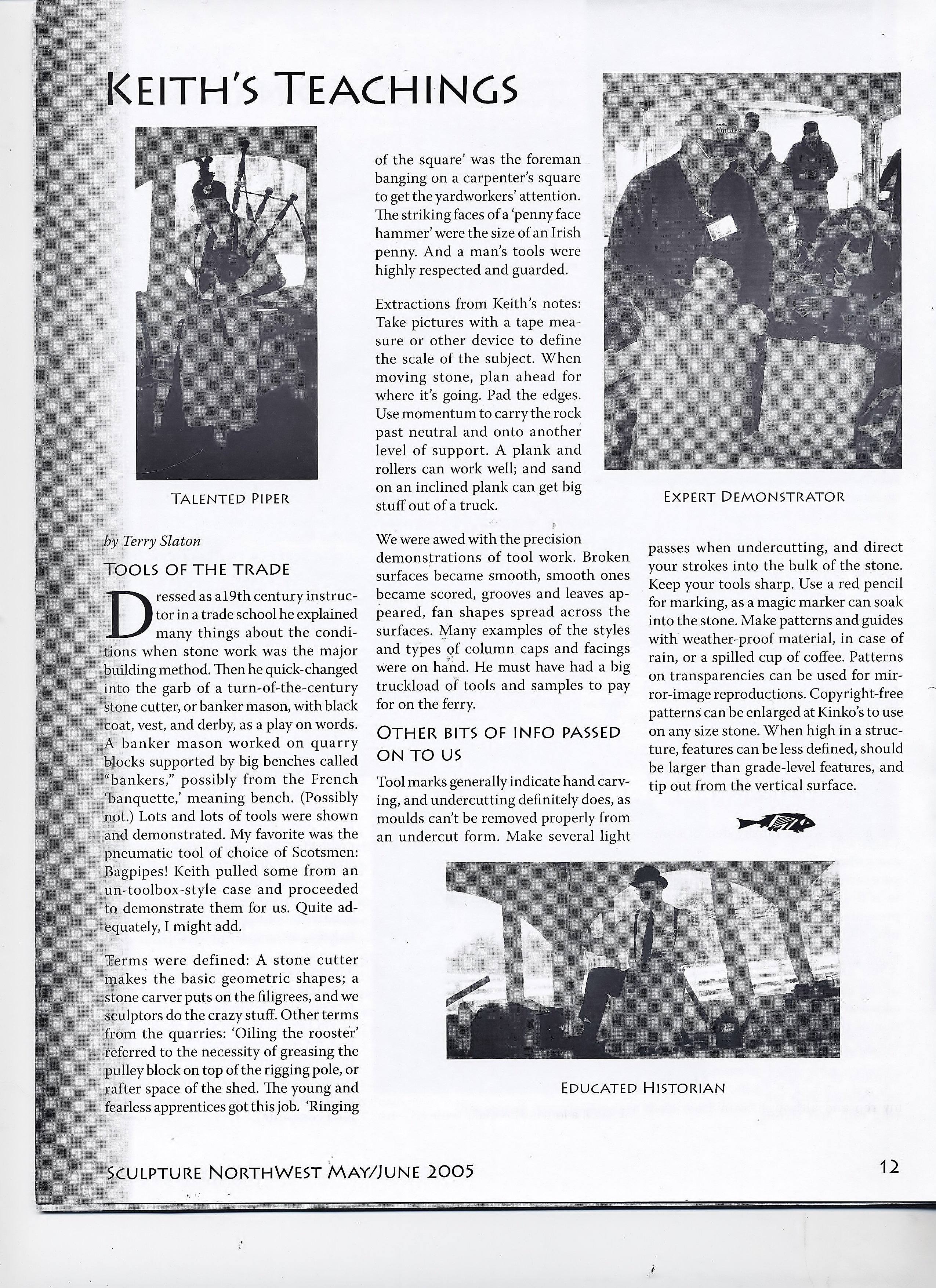Page from the Past...
Keith Philips: Tools of the Trade by Terry Slaton
Dressed as a 19th century instructor in a trade school he explained many things about the conditions when stone work was the major building method. Then he quick-changed into the garb of a turn-of-the-century stone cutter, or banker mason, with black coat, vest and derby, as a play on words. A banker mason worked on quarry blocks supported by big benches called "bankers", possibly from the French 'banquette', meaning bench. (Possibly not.) Lots and lots of tools were shown and demonstrated. My favorite was the pneumatic tool of choice of Scotsmen; Bagpipes! Keith pulled some from an un-toolbox-style case and proceeded to demonstrate them for us. Quite adequately, I might add.
Terms were defined;
A stone cutter makes the basic geometric shapes;
A stone carver puts on the filigrees;
And we sculptors do the crazy stuff.
Other terms from the quarries:
'Oiling the rooster' referred to the necessity of greasing the pulley block on top of the rigging pole, or rafter space of the shed. The young and fearless apprentices got this job.
'Ringing of the square' was the foreman banging on a carpenter's square to get the yardworkers' attention.
The striking faces of a 'penny face hammer' were the size of an Irish penny. And a man's tools were highly respected and guarded.
Extractions from Keith's notes: Take pictures with a tape measure or other device to define the scale of the subject. When moving stone, plan ahead for where it's going. Pad the edges. Use momentum to carry the rock past neutral and onto another level of support. A plank and rollers can work well; and sand on an inclined plank can get big stuff out of a truck.
We were awed with the precision demonstrations of tool work. Broken surfaces become smooth, smooth ones became scored, grooves and leaves appeared, fan shapes spread across the surfaces. Many examples of the styles and types of column caps and facings were on hand. He must have had a big truckload of tools and samples to pay for on the ferry.
Other bits of info passed on to us
Tool marks generally indicate hand carving, and undercutting definitely does, as moulds can't be removed properly from an undercut form/ Make several light passes when undercutting, and direct your strokes into the bulk of the stone. Keep your tools sharp. Use a red pencil for marking, as magic market can soak into the stone. Make patterns and guides with weather proof material, in case of rain, or a spilled cup of coffee. Patterns on transparencies can be used for mirror-image reproductions. Copyright-free patterns can be enlarged at Kinko's to use on any sized stone. When high in a structure, features can be less defined, should be larger than grade-level features, and tip out from the vertical surface.

